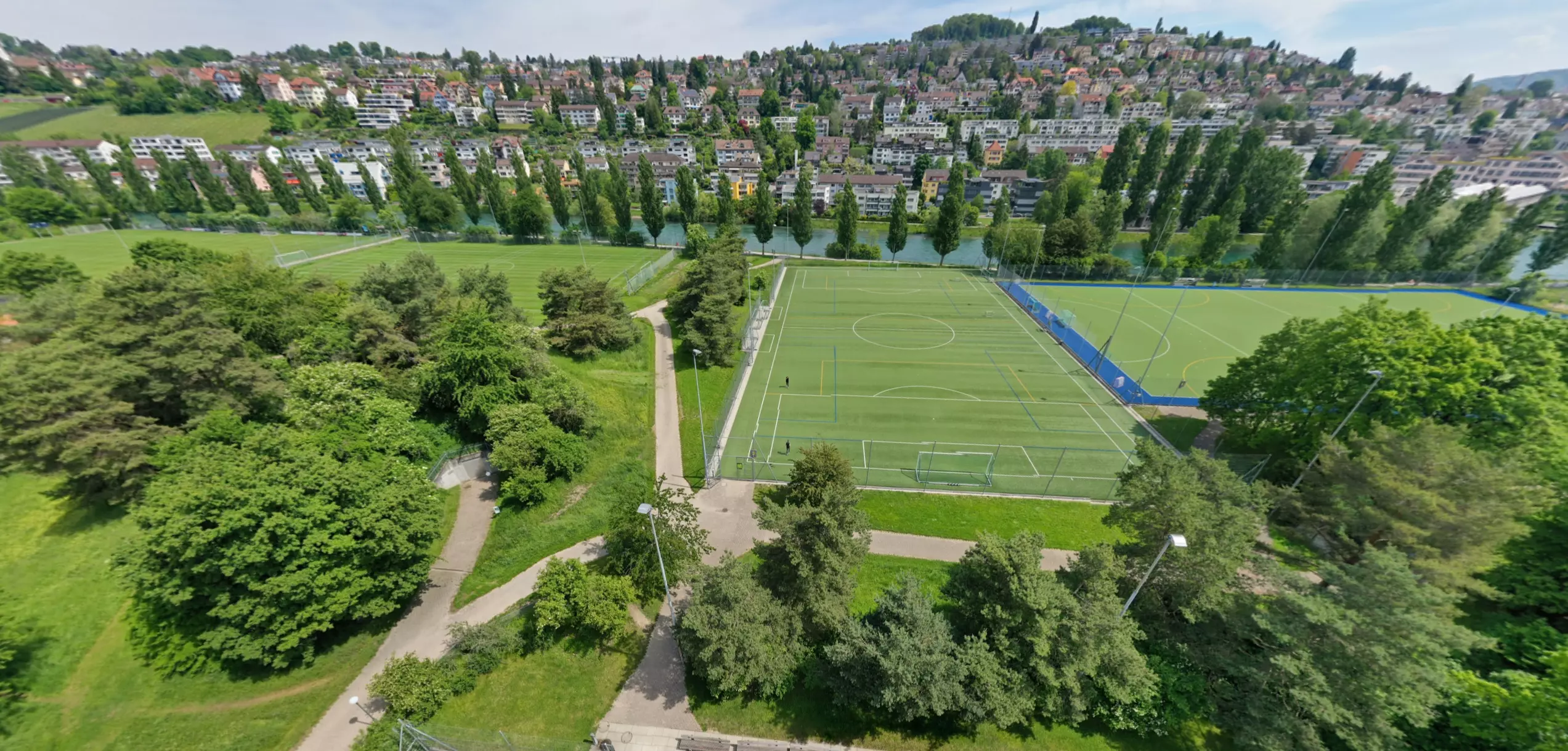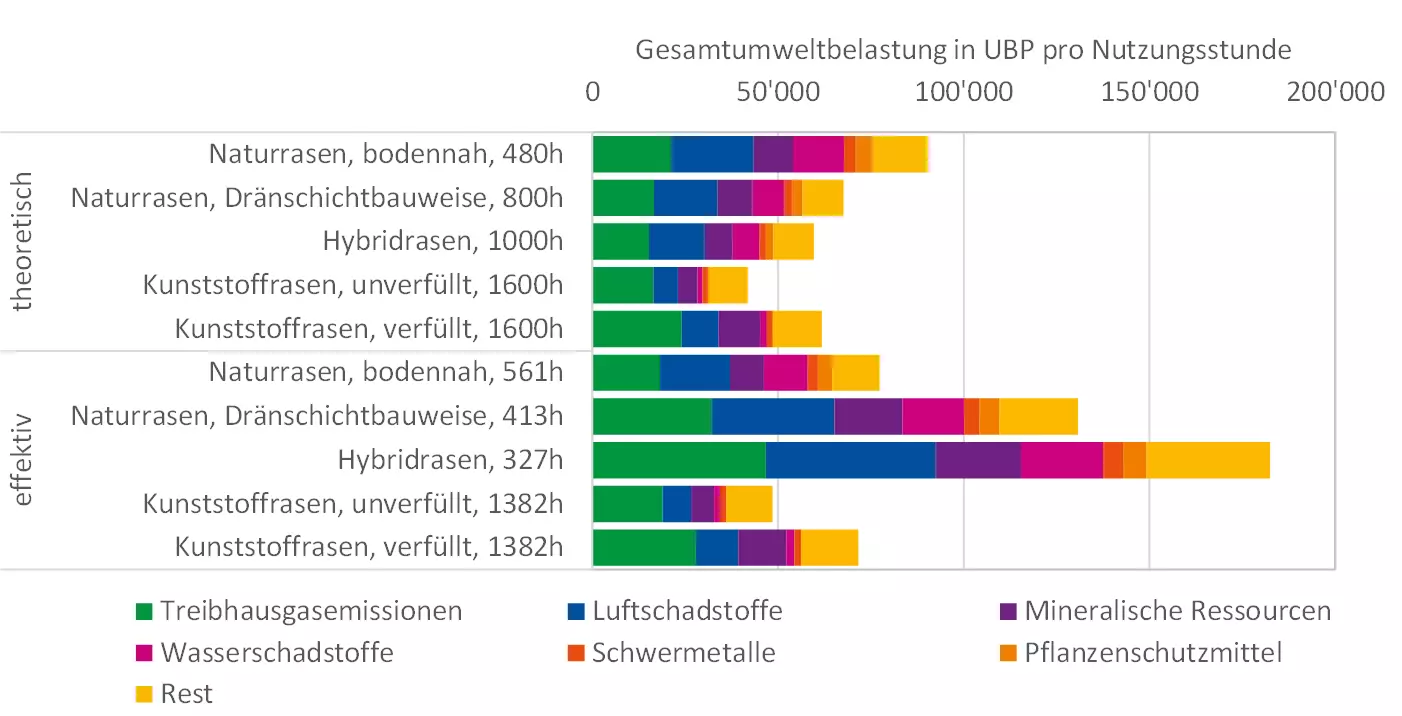Artificial turf scores better
The comparison of the environmental impact of artificial and natural turf is heading into extra time. Filled artificial-turf sports fields have a high environmental impact, because the plastic granulate required to fill them has to be replenished on a continual basis. But how does unfilled artificial turf without granulate fare in comparison with filled artificial and natural turf sports fields?
Football is the most popular team sport in Switzerland. The grass sports fields on which football is played are precisely defined and constructed structures that can comprise natural, hybrid or artificial turf. The ZHAW Life Cycle Assessment Research Group compiled a detailed life cycle study for natural, artificial and hybrid turf, in cooperation with Grün Stadt Zürich, a local government sector that supports and initiates many projects aimed at making Zurich more environmentally aware. This study covers the entire life cycle of the turf, from the construction of turf sports fields to their maintenance, renovation and ultimate deconstruction. The study was reviewed by three independent experts who confirmed the robustness of the results.
Using the service life of the turf that is theoretically possible - which varies according to the respective type - unfilled artificial-turf sports fields cause the lowest environmental impact for all indicators investigated, except for greenhouse gas emissions and primary energy requirements. In comparison with their unfilled counterparts, filled artificial-turf sports fields have a significantly higher environmental impact for all indicators examined. The greater environmental impact stems primarily from maintenance and renovation activities, which in the case of filled artificial-sports fields require significantly more plastic than the unfilled variant.
The study’s author, René Itten, emphasises that “the most important factor in terms of environmental impact is the annual utilisation time”. Artificial and hybrid turf, as compared with natural turf, can be played on much longer each year, which reduces the environmental impact per hour of use. However, the annual utilisation time depends not only on the turf sports field itself, but also on the available infrastructure, lighting and other factors, such as the quality of the turf sports fields.
This life cycle study lays a building block for the environmental optimisation of sports facilities for football and other sports played on turf fields. The individual athletes, as well as operators of this infrastructure, are called upon to make their contribution to sustainable sporting activities with a low environmental footprint. They can do this, for example, by opting to travel to matches or to training sessions using environmentally friendly means of transport.
Read the detailed report on the life cycle assessment of natural, hybrid and artificial turf sports fields(PDF 2,6 MB) (available in German only) and the executive summary(PDF 420,4 KB).

